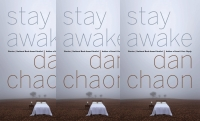By Jennifer K. Sweeney
Reviewed by Adam Tavel
Perugia Press, 2009, 91 pages
As recipient of the 2009 James Laughlin Award of the Academy of American Poets, the only major American award for a second book of poetry, it would be easy to passively dismiss Jennifer K. Sweeney’s How to Live on Bread and Music as another collection in the long line of contest winners that swell our local bookstores’ shelves. Though it is exquisitely designed by the good folks at Perugia Press with stunning cover art furnished by the poet’s father, an accomplished painter, the book’s didactic title does it no favors; for those of us inclined to grumpiness, it is reminiscent of the imperative platitudes often found in the least inspired work of Mary Oliver. All of this snarky skepticism fades, however, as soon as one creases the cover open, as How to Live on Bread and Music is not only a volume of great range and depth, but is full of sonorous, deeply felt poems that evoke Marianne Moore’s famous adage that our best verse strive to create “a place for the genuine.”
“Nocturne,” a brief, apocalyptic lyric serves as the collection’s opener, and it makes for an appropriate tone-setter, with its allegorical dreamscape of “a blue city in mind” where a purgatorial pall is marked only by the presence of “a musician/who plays a harp without strings.” Sweeney’s “rippling canal” and “zeppelin sky,” much like her other atmospherics, are intentionally ambiguous—this is surely a place of latent violence, but also a place where “a lone streetlamp tends/its blue arc of light,” so it is not completely absent of hope. It all makes for a pleasant imagistic catalog, the sort of Surrealism-Lite that reminds one of Mark Strand or Jorie Graham, when the wallop comes in the poem’s abrupt final couplet: “Maybe you hear a song or maybe you don’t./That is the choice we are always making.” This swift exeunt from the poem’s hallucinatory realm, in addition to the blunt directness of the second person address, combine to make “Nocturne” a sucker-punch ars poetica that not only questions the reader’s expectations, but which fittingly introduces the candid, gripping, and widely varied poems that follow.
Though it is broken into five sections, How to Live on Bread and Music avoids goose-stepping to a predictable thematic march. True, many of the poems early in the collection address themes of childhood and innocence, such as “The Three Sisters” and “The Silence of Girls,” whereas motifs of gardening, domesticity, and locomotion develop later, but overall these poems echo and reverberate like voices in a canyon, so the sense of play and surprise are never lost. Another remarkable aspect of Sweeney’s book is her ability to express the full range of her voice. It is easy to see that the terse lyric is her default mode, especially in poems such as “Requiem for America” and “Death Valley”—the latter of which begins with the startling line “the desert is a woman with no ideas”—but narratives such as “Adolescence,” “How to Uproot a Tree,” and “White Shadow” benefit from the same local brilliances and musical compression of language.
Among the many impressive aspects of this volume, Sweeney’s ear is perhaps most noteworthy. Regardless of length or form, she writes a supple, resonant line that displays an acute attention to sound, which is a gift rarely seen or cherished among her contemporaries. (This reviewer should know, since he too is a product of Generation Irony.) In light of these many riches, then, it is easy to overlook Sweeney’s rare miss, such as the overwrought sequence “The Listeners,” that for all its ambition and muscle never quite unifies its loose collage of turntable allusions. Such missteps are few indeed, as How to Live on Bread and Music is an exquisite book that transcends our literary moment, and one hopes readers will hear its lush grace singing for many years to come.








Pingback: Emprise Review // Review: How To Live On Bread and Music
Pingback: Emprise Review // Book Review:: Carta Marina: A Poem in Three Parts
Pingback: Links!!! 6.01.10 | Emprise Review